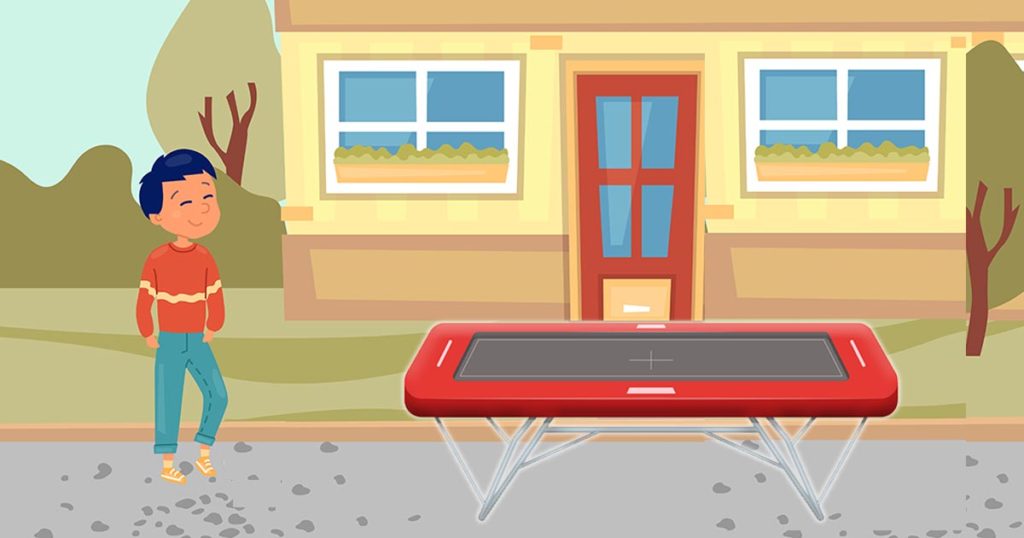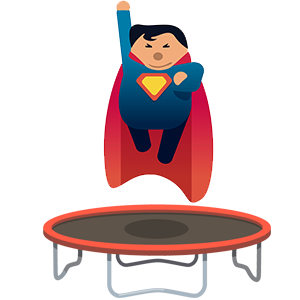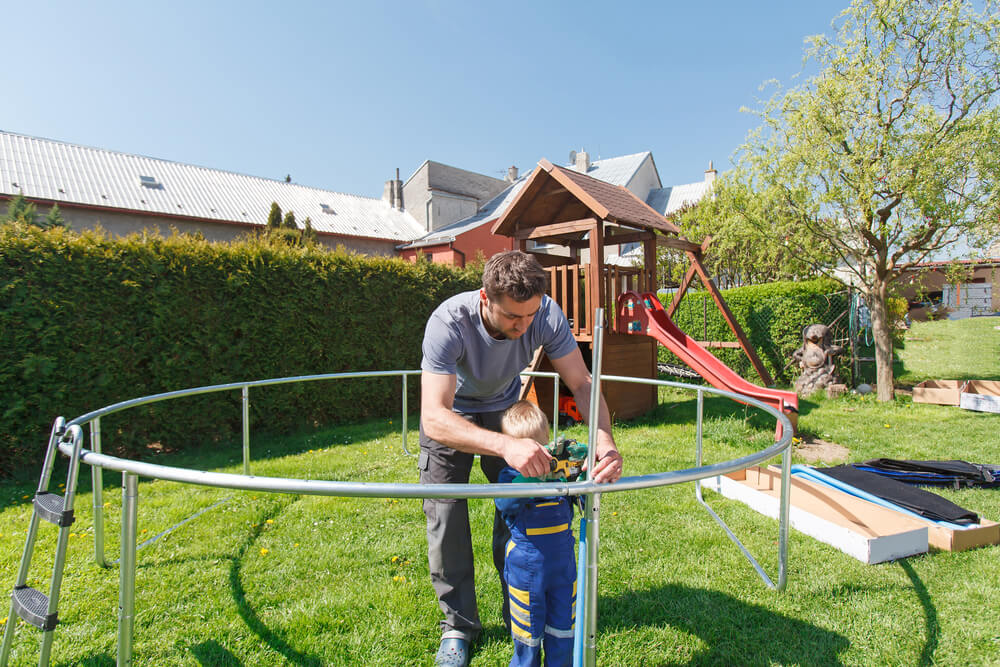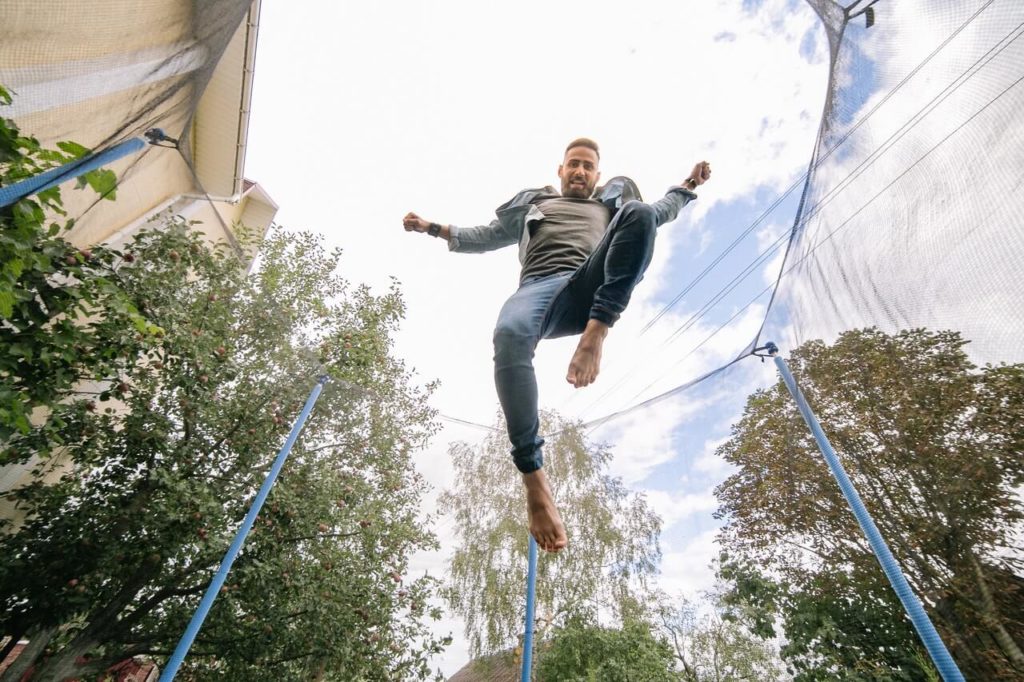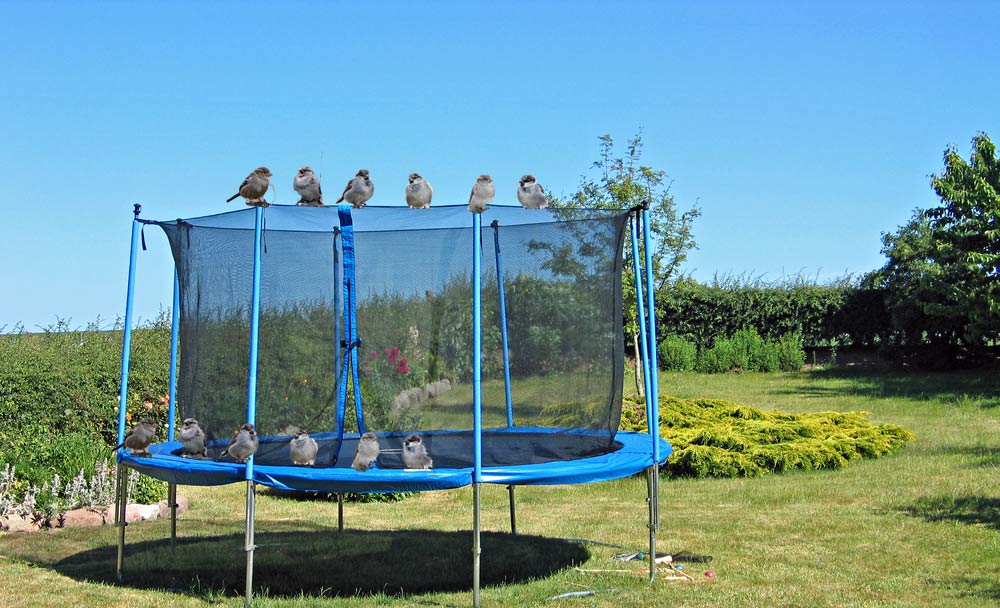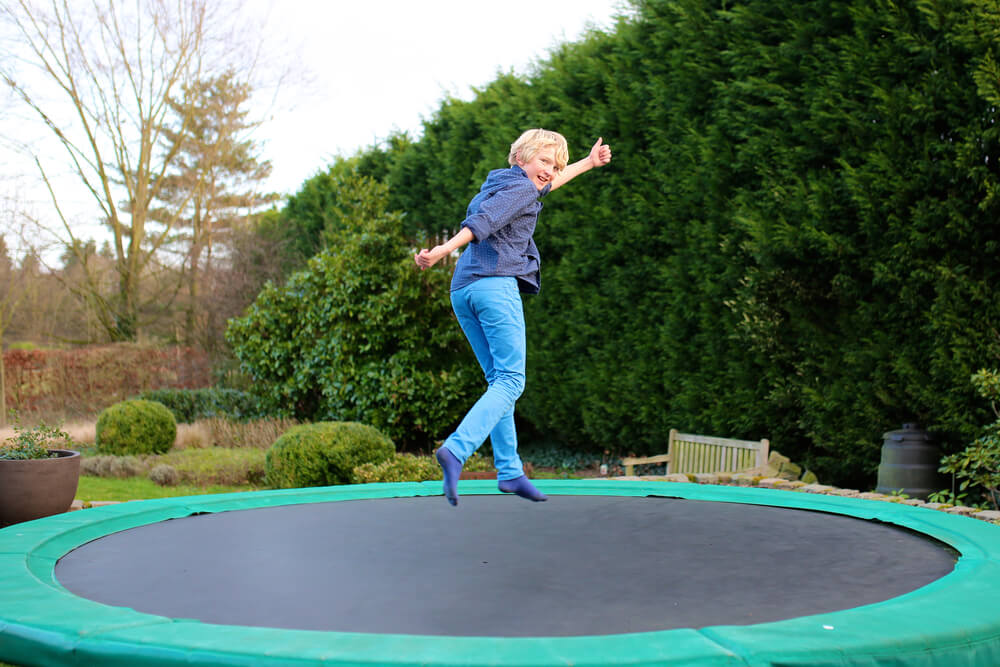Putting a trampoline on concrete is like risking the safety of jumpers. But there are other ways to ensure safe trampolining on the concrete patio. Click here to know more.
A trampoline is an excellent piece of equipment for outdoor fun.
It requires a stable flat surface that will hold it firmly to the ground for years.
But can you put your trampoline on concrete?
Yes, you can sit your trampoline on concrete as long as you implement the proper safety measures.
That way, users will enjoy safe jumps for years.
Read on to learn how to make a comfortable concrete surface for your trampoline.
Setting Up a Trampoline on Concrete
Besides having flat ground to sit your trampoline, you need a surface that can absorb shock.
Putting your trampoline on a hard surface like concrete has its challenges.
First, the force of bouncing on such ground can damage the frame and legs of your trampoline.
It’s also tricky to secure your trampoline to the ground with an anchor kit when it’s sitting on a concrete patio. It may start shifting positions when in use and become a safety risk to users.
But there’s good news.
Things don’t need to be as complicated because you can transform your concrete surface into soft ground by adding rubber mats.
Having an extra layer of rubber mats beneath your trampoline will make the surface soft and comfortable.
Anchoring Your Trampoline on Concrete
Anchoring your trampoline on concrete will prevent it from shifting during use.
The anchors will also prevent the unit from blowing away in high winds.
A rubber matting will create friction and hold your trampoline firmly in place when in use.
There aren’t trampoline anchoring kits for concrete in the market,
For anchoring, you’ll need wedge anchors. This means you’ll have to drill into the concrete with specialist equipment.
A simple alternative to anchoring would be to weigh down your trampoline legs using heavy objects like railway sleepers or sandbags.
Remove the weights whenever the trampoline is used to prevent undue stress on the frame that may cause damages or void the frame warranty.
Safety Tips for Using Your Trampoline on Concrete
As we’ve learned earlier, a trampoline on concrete can be dangerous if you don’t take the proper measures to make it safe for users.
But if you have no choice but make do with the concrete surface, there are things you can do to ensure safety all around your yard.
These tips will help you childproof the surface to limit injury risks and make trampolining fun.
1. Make the Trampoline Base much Softer
To limit injury risks on the concrete, use rubber padding. This will provide soft cushioning, just like when the trampoline rests on grass.
Rubber padding may not be entirely childproof, but it will ensure a soft base.
A more affordable alternative is to use interlocking exercise tiles.
You can shape them to your trampoline’s size and move them whenever the need arises.
Both rubber mats and interlocking tiles can help reduce injuries from falls.
2. Use a Safety Enclosure Net
Enclosing your trampoline with a safety net will help prevent jumpers from falling off the trampoline.
By encasing the entire jumping area, you’ll be providing safety and protection for users.
Although a net may not completely secure jumpers from the hard concrete, at least they’ll not be in danger of falling off the unit and sustaining injuries.
When used in tandem with the rubber mats, the net will be a welcome safety addition.
3. Anchor Your Trampoline
Why do you need to anchor your trampoline on concrete?
Hang on for a minute.
When your trampoline sits on concrete, it’s not firm and stable.
Chances of it shifting around are greater, and this compromises its stability,
There’s no friction to hold it on the ground.
Only through proper anchoring will you prevent the danger of accidents or injuries.
We already learned how to anchor trampolines on concrete through drilling and creating pegs to hold it down.
Alternative Places to Sit Your Trampoline
While you can put your trampoline on concrete (with extra safety precautions, of course), we have other places where you can keep your trampoline.
These surface options will keep both the trampoline and jumpers safe without spending too much on safety.
Grass Surface
A grassy area is the best for placing your trampoline.
The natural give of the grassy surface offers trampoline jumpers a soft landing should they accidentally fall.
Also, your trampoline won’t require additional anchoring. The only thing you’ll do is ensure that the surface is flat. Do some terraforming if need be.
Padded Surface
Padding can be used as an original surface or added extra security on a concrete or grassy spot.
With padding, you have added cushioning that will prevent injury to the jumpers.
Dirt Surface
An area with dirt provides an excellent surface to place your trampoline. The only issue you’ll encounter is the absence of a natural anchor.
But overall, a dirt place is secure and safe for trampolining. The only drawback is that dirt is slippery and may compromise the trampoline structure.
It gets better:
You can easily solve this by finding a secure area where the dirt will not easily more.
Overall, dirt offers a natural cushion in case jumpers fall of the trampoline.
You should also note that dirt can get too old or dry and become tough. In heavy wind or rain, the unit can shift.
Final Thoughts
Can you set up your trampoline on concrete? The answer is yes. However, to keep the area of the trampoline and the unit itself safe, you have to provide a soft base.
A soft rubber base will protect the trampoline frame and the safety of the users.
When you decide to install your trampoline on the concrete surface, your commitment to safety should be paramount. The whole idea is to create a safe environment for trampolining.
First, you have to ensure that the ground is flat and level to distribute weight evenly when being used and when idle.
Now you know what you need to keep your trampoline on a concrete surface. It should be stable, safe, and secure to jump on. As long as you implement proper safety measures, your concrete will not be a danger anymore.

